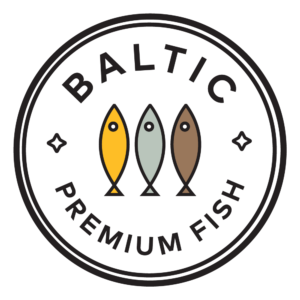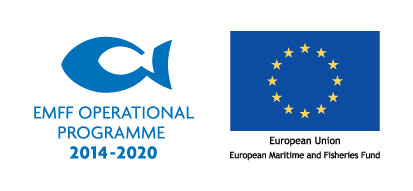Fresh fish reaches Ukraine within 24 hours
 How do we ensure that our fish reaches Ukraine still fresh? Needless to say it’s through great teamwork and using high-quality technology.
How do we ensure that our fish reaches Ukraine still fresh? Needless to say it’s through great teamwork and using high-quality technology.
Never more than two hours after a trawl the boat is back in the harbour, from where the fish move straight to the factory and are prepared for freezing. Working quickly at this stage is particularly important, because the quicker the fish make it from the water to our freezing line, the better we’re able to ensure their freshness. Before being snap-frozen, the fish are sorted and vacuum-packed. Sorting is important in order to be able to offer the client exactly the fish they need. Larger fish are suitable for e.g. smoking, while smaller fish can be used for conserves. Packaging further extends the shelf life of the fish and guarantees maximum freshness upon thawing.
Within just four or five hours of being caught, the fish are ready to be frozen. Sorting one truckload of fish and packaging it for freezing takes three or four hours, and it takes the same amount of time again to snap-freeze them. The time this takes is also important, since the quicker a fish freezes, the smaller the ice crystals that form within it. This ensures that the structure and flavour of the fish remain as natural – and of as high quality – as possible. As such, fish brought to harbour in Estonia at six in the evening are ready to send on their way to Ukraine by eight the next morning. Mid-season, our factory can process up to 200 tonnes of fish a day, of which 120-160 tonnes are frozen. Baltic herring and sprats are used to make fillets and carcass according to the client’s wishes.
It’s also worth knowing that even where large amounts are concerned, every fish can be matched to the fisherman who caught it. Our MSC certificate ensures a transparent work and quality chain in our factory, thanks to which we always know who caught the fish in e.g. our clients’ conserves and when they caught them.
Below is a description of how our factory operates.
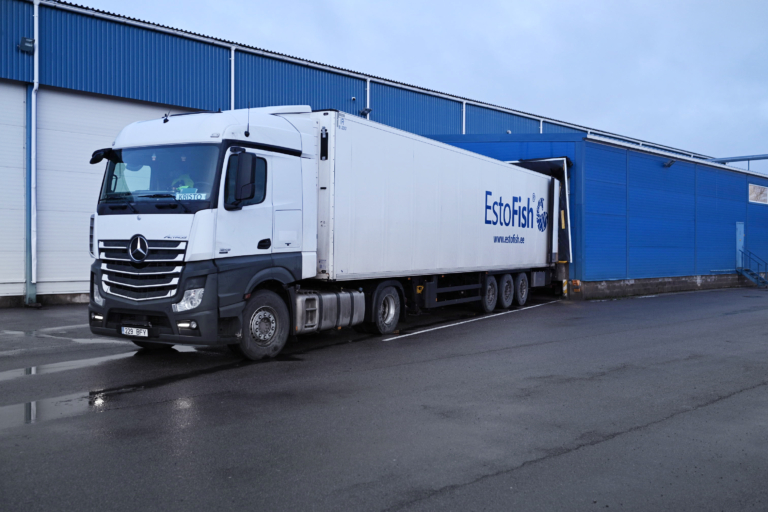
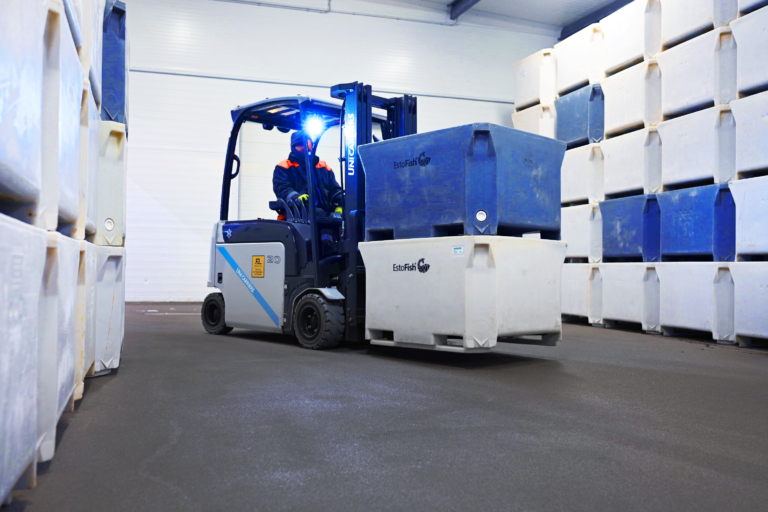



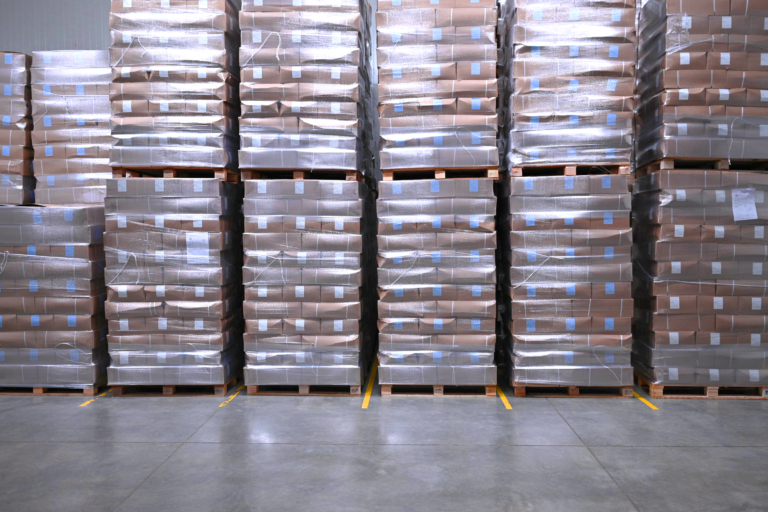
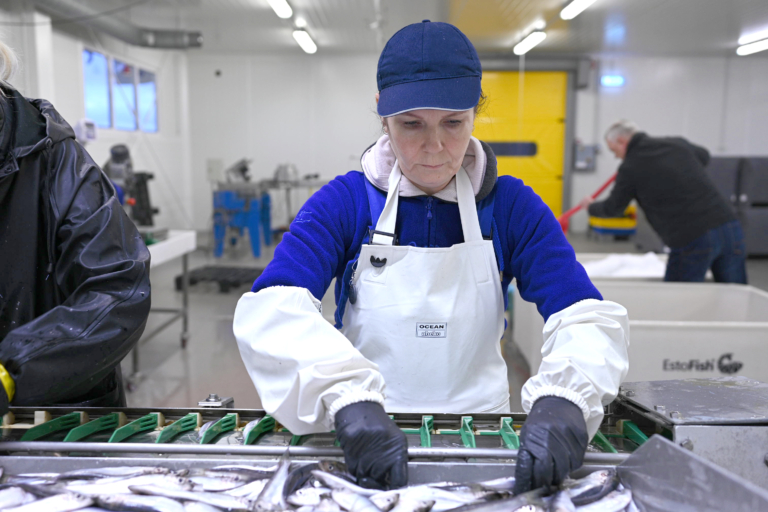
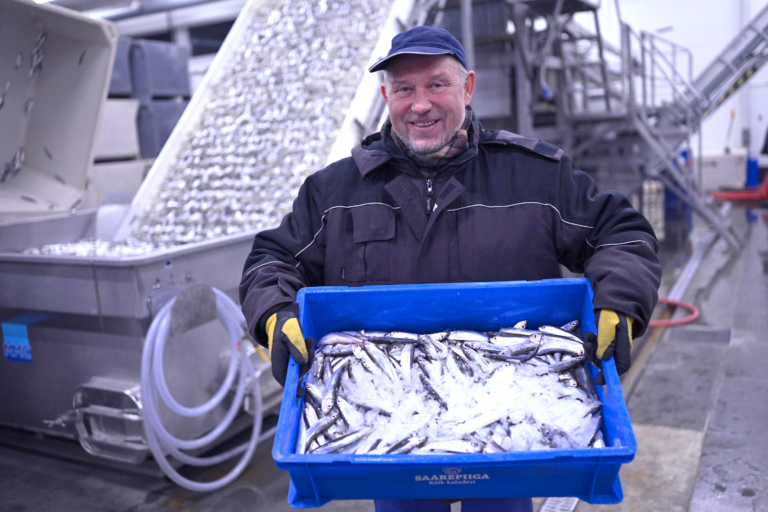
- Fresh fish generally arrive at the factory in containers holding around 450 kg of fish. The containers are brought to us in ordinary refrigerated vans.
- The containers are unloaded from the vans and brought in for sorting.
- The fish are sorted and packaged into 11 kg briquettes that are immediately passed along the line for freezing.
- Packaged fresh fish await snap-freezing.
- Frozen fish emerge from the freezer and are stacked on pallets.
- The fully stacked pallets are wrapped in plastic film for transport to the refrigeration plant.
- Products are stored in our warehouse.
- Sorted Baltic herring are used to make carcass and fillets according to the clients’ wishes.
- Our cheery and professional staff take fresh Baltic herring to market.

